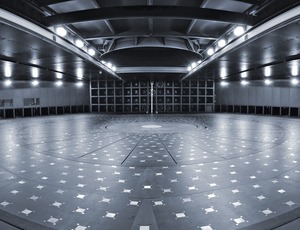
When crossing the border of Colorado and Wyoming in his truck, Horia Hangan once found himself in the eye of a tornado. "Because nobody talks about tornadoes in winter, I think it was classified as a high-intensity storm," says Hangan. He says it was one of his scariest drives, with icy roads and cars and trucks being tossed into ditches around him. Somehow, he made it through.
 |
| HANGAN |
"We're seeing big differences in wind loads between tornado and straight winds on large, low-rise buildings," he says. And the testing isn't slowing down. "We're booked until March—we have no windows of time," he says. Hangan is working with universities and businesses from countries around the world to test the design of safe rooms in buildings, power-station nodes and other critical infrastructure, such as hospitals, under simulated tornadic events.
Armed with data from the lab, Hangan this April will chair an American Society of Civil Engineers committee, where he'll share his findings and help advise the implementation of new building criteria for critical structures and residential dwellings. None of it could be done without WindEEE.
The idea of bottling tornadoes came when Hangan and students were working to address the problem of non-synoptic events and their effect on structures. On a lark, he designed a facility to produce such events.
"Then, we hired consultants to look at my idea and tell me if I'm not nuts. They said it would be feasible," says Hangan. After that came numerical simulations and 75 runs of differing configurations to optimize the design. He built a 1:11 scale model of the lab, implementing precise stop-and-start controls for the facility's 106-fan array. After that came bidding, building and more testing.
The lab has been producing data since last September. While Hangan still avoids driving through tornadoes, he now can make his own in the lab.


Post a comment to this article
Report Abusive Comment